DHI vs. FUE: Hair Transplant Procedures Explained
DHI vs FUE. Which hair transplant method is best? Which one should I go for? These are probably topics that you’ve already come across quite a lot during your research on hair transplants. With such a vast amount of information out there, it’s understandable that things can quickly become confusing. That’s why we’re here to give some clear definitions of both DHI (Direct Hair Implantation) and FUE (Follicular Unit Extraction). We’ll look at what these treatments are, examining their differences, and provide some tips on how you can make a decision about which side you stand on when weighing up FUE vs DHI. But before we get into that, let’s take a closer look at what DHI and FUE are and how they work.
Find the Right Hair Transplant Specialist at a Fraction of the Cost
Qunomedical only lists hair transplant clinics and doctors that have been thoroughly vetted with quality and affordability in mind. Contact us for your 100% free, non-binding assessment.
What Is FUE and How Does It Work?
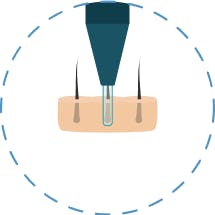
Step 1
Punch incisions around hair follicles
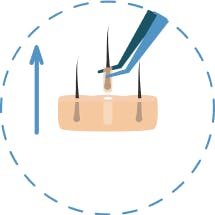
Step 2
Extraction of follicular units
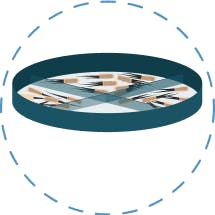
Step 3
Harvesting of the grafts
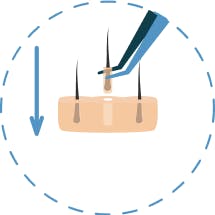
Step 4
Implantation of the grafts
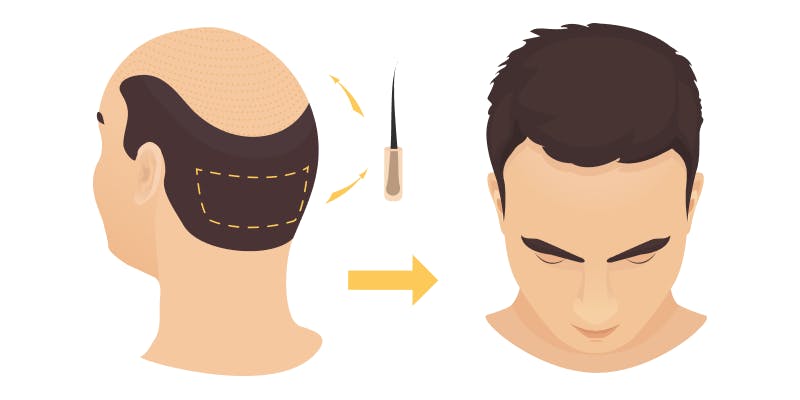
FUE hair transplant surgery has gained popularity over the last decade. Unlike the classic technique, FUT (or Follicular Unit Transplantation), in which a strip of skin is removed to harvest the grafts, FUE extracts the grafts directly from the scalp. As a consequence, FUE does not leave such visible scarring and ensures natural-looking results.
How It Works
During an FUE hair transplant, groups of one to four hair follicles - known commonly as grafts - are manually extracted one at a time and placed into a storage solution. Once the extraction stage is complete, the doctor will open the canals using microblades. These are the holes or slits into which the grafts are implanted. Once the canals have been opened, the doctor can then remove the grafts from the solution and implant them into the recipient area. Following FUE surgery, patients tend to notice the first results appearing around two months after the transplant. More significant growth usually becomes visible after six months, while the full results typically appear 12–18 months after the procedure.
What Is DHI and How Does It Work?
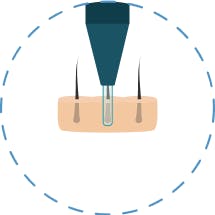
Step 1
Hair follicles are extracted one by one
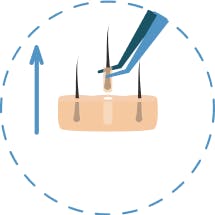
Step 2
Extraction happens right before implantation
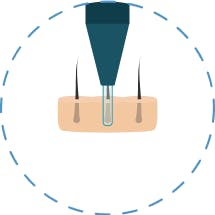
Step 3
Grafts are directly implanted into the target area

DHI hair transplant surgery is a relatively new procedure and, as with FUE, it leaves no visible scarring and produces natural-looking results. While the graft extraction process is also similar, there are a few differences worth noting when considering DHI vs FUE.
How It Works
To start with, hair follicles are extracted one by one using a specialised tool with a diameter of 1mm or less. The hair follicles are then loaded into an implanter tool, known as a Choi Implanter Pen, and implanted directly into the recipient area. During DHI, the creation of the canals and the implantation happen simultaneously. The Choi Implanter Pen gives the doctor more precision when implanting the hair follicles. This allows them to control the angle, direction, and depth of the newly transplanted hair. Recovery time for DHI is similar to FUE. Results usually appear within a similar timeframe too, with full results typically taking between 12–18 months to appear.
 JuliaPatient Manager
JuliaPatient Manager“Qunomedical helped me so much! Thank you!“
“Qunomedical helped me so much! Thank you!“
What Is the Difference Between DHI and FUE?
The main difference when it comes to DHI vs. FUE is the way grafts are implanted into the recipient area. During an FUE hair transplant, the canals need to be opened prior to implantation, which then allows the surgeon to manually implant the extracted grafts. DHI on the other hand, makes use of a specialist tool known as a Choi Implanter Pen. This allows the implantation stage to happen right after extraction, without the need to first create the canals for the grafts.
Which One Is Right for Me?
So, now that we have a basic understanding of what these two procedures are, your next question might be, “which one is right for me?” To help us answer this, we asked one of the most renowned hair transplant specialists, Dr. Emrah Cinik, MD, to give us a few pointers on this topic. Dr. Cinik explained that, “DHI is typically recommended for patients who are younger than 35 because in these cases hair loss is not very advanced and success rates are higher.” He also noted that, “DHI is a good option for those who want to lower their hairlines and fill up their temples. The maximum number of grafts we implant with DHI is 4000.” We also asked Dr. Cinik about DHI vs. FUE in terms of surgery success rates. He explained that there’s virtually no difference between the two here, as “both FUE and DHI’s success rate is up to 95%”.
DHI VS. FUE: Start Your Hair Transplant Journey
Interested in undergoing a DHI or FUE hair transplant? Contact us and one of our Patient Managers will be in touch to get started with some initial consultations. In the meantime you can find out more about the clinics and the people involved by checking out our range of Qunomedical approved DHI hair transplant clinics and FUE hair transplant clinics. All of our Qunomedical approved doctors and clinics have been thoroughly vetted to ensure that they consistently provide high-quality, affordable care.

Patient manager
Frieda
Your personal Patient Manager
Let's talk
Still unsure? Feeling overwhelmed? Talking to a real person can give you the guidance and reassurance needed. You don’t have to do it alone. Let’s find the right doctor together.